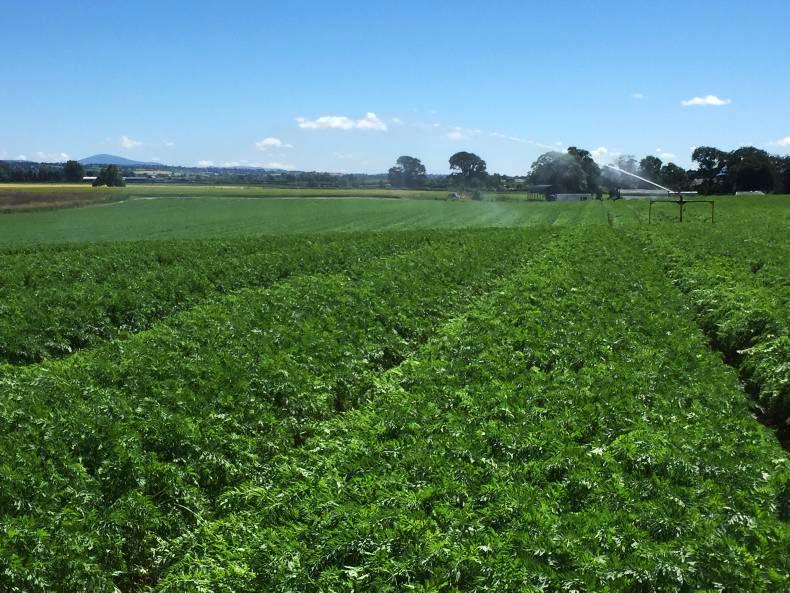When we started growing carrots some years back, we never dreamt of irrigating. On the eve of my wedding in 2013 we bought our first irrigator, a mighty 250m by 60mm diameter system complete with tractor pump and lay flat. It worked pretty well but output was an issue and if you had a field longer than 250m it was a problem.
Since then we have added to bigger ladies, on 450 by 100 and another 550 by 110, both with standalone pumps and pipe work. This allows us to cover about 15-20 acres per day, depending on field sizes.

How it works
For those not big into irrigating, the basic premise is that a pump at the river pushes water through the turbine on the reel. This turbine generates the power for the reel to pull the pipe down the field as the gun fires out water. The gun is pulled out at the start of each pull using a tractor.
The real joy of irrigating is moving them. Every 4-10 hours depending on pull length, you have to move them 70 odd meters across the field. This often takes place at ungodly hours in the middle of the night and can be eerie enough. Standing on a river bank with a summer mist around you with a head torch on a 3am is a strange experience as people often appear from nowhere, the banks of rivers are a hive of activity at all hours of the night and day.

The aim for us at the moment is to pump 20-25mm of water per acre, this can be cut back if it rains a little but with the crop using around 4mm of water per day, it doesn’t take long for it to drink 20mm of water.
We had hoped for a drop of rain over the weekend to buy us a reprieve for a week or two but it only drizzled enough to keep the dust down, cue the pumps starting back up today on a planned pull over the entire carrot and parsnip area.

Cereals
On the cereal side, our barley after carrots looks pretty good and the news of awful harvests in Europe has added a bit floor to the grain market. The tillage sector in Ireland is a bit of a sideline act but globally tillage sets the pace. High grain prices would benefit Irish tillage farmers but even more so benefit the dairy men as it would put pressure on the north American and a lot of the European dairy farmers who feed grain predominantly.
The main driver behind grain prices is oil, they correlate almost identically. For the sake of all sectors, we actually need the oil barrel to get expensive again which seems like a turkey voting for Christmas but the overall effect of higher grain and dairy prices would negate any losses through higher fuel prices in the tank.
Farmer writes: cereal farming on the hind tit
Farmer writes: A lot has happened since I was diagnosed with cancer






 This is a subscriber-only article
This is a subscriber-only article













SHARING OPTIONS: